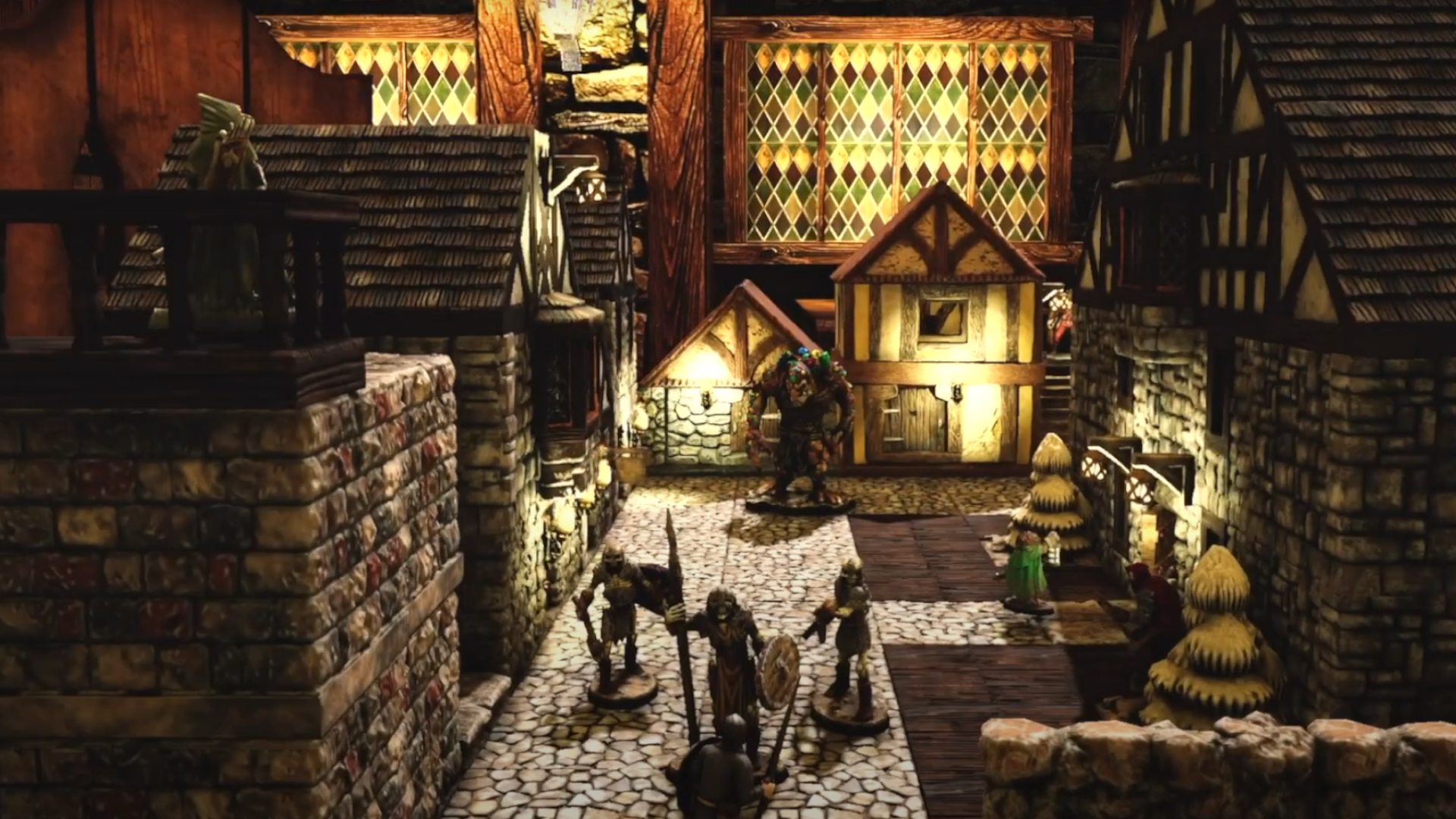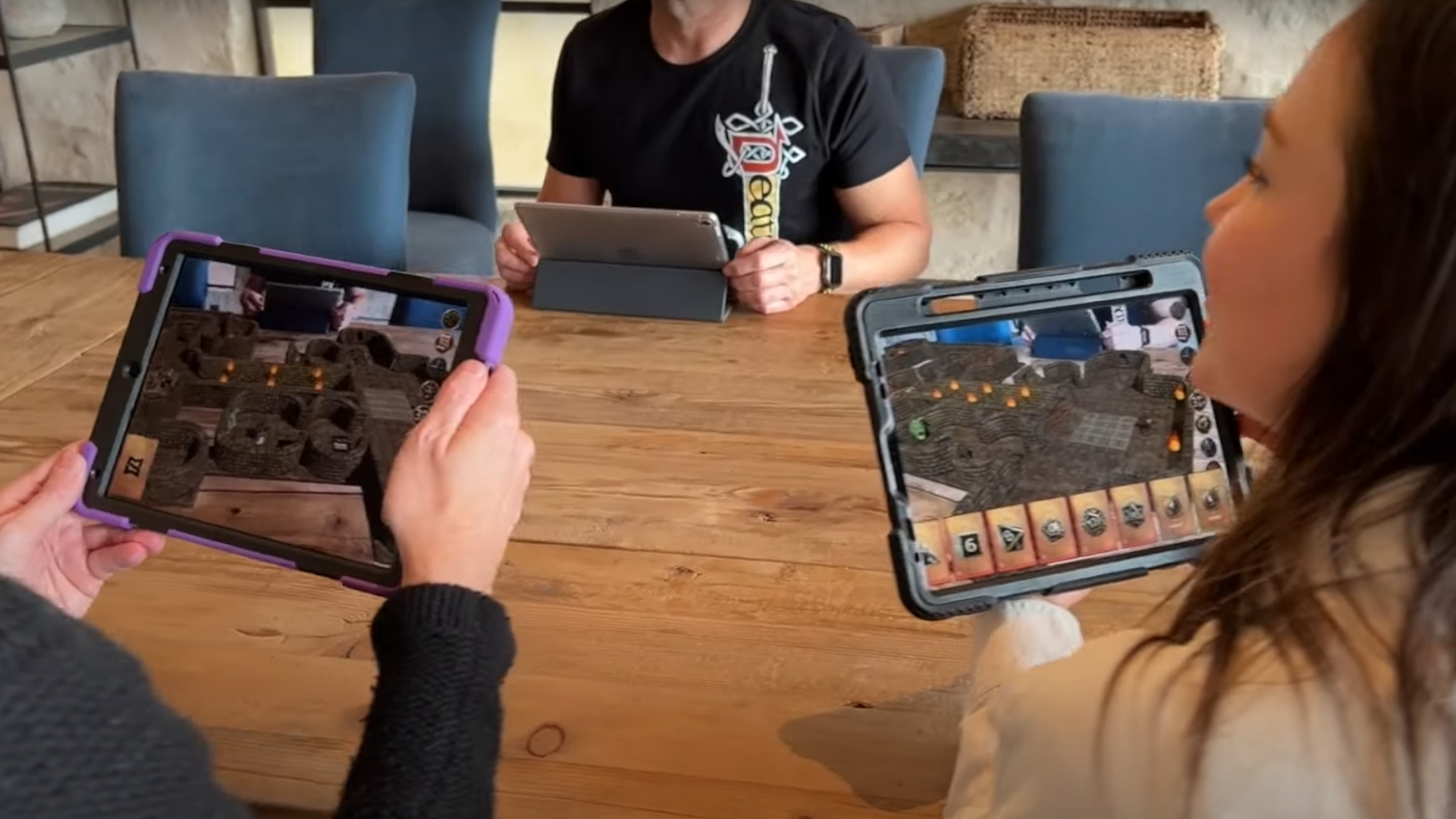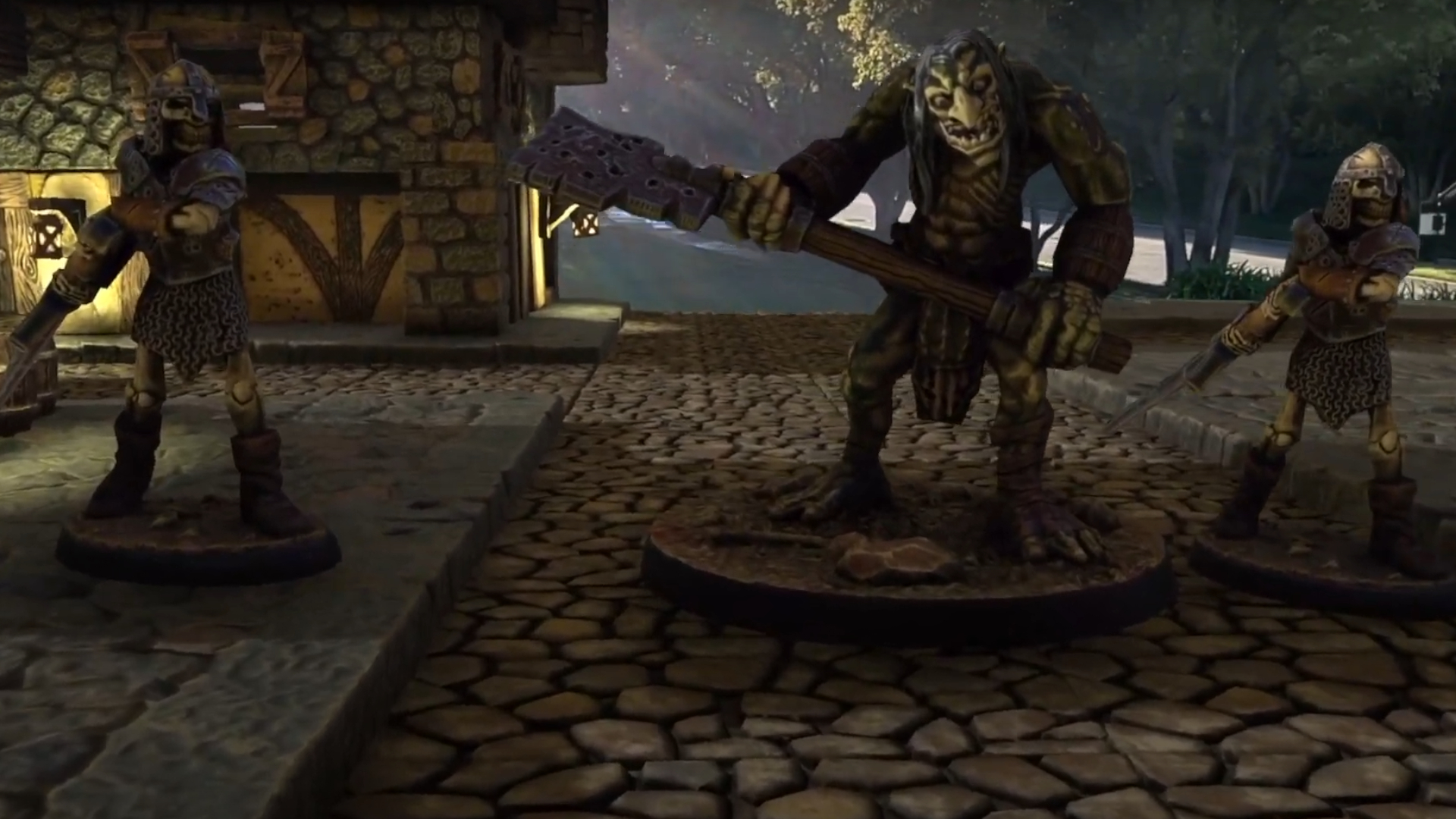
Mirrorscape has thrown a grenade into the world of D&D virtual tabletop.
Usually, playing the best tabletop RPGs online follows the same pattern - you settle down at a laptop or PC and wade through top-down battlemaps filled with tokens. And that's great. Some form of D&D is better than none, right? However, it's never quite the same as rolling dice together in person. That's why Mirrorscape is so eye-catching. It literally brings the game to your table, no matter where that table is.
As an augmented reality app, it allows you to see D&D terrain and miniatures as if they were there in front of you. That means you can get up and move around it (or zoom in to get a model's-eye view) as if it was a physical object on the surface. While this is great for making everyone feel involved regardless of where they are, it's also handy even if you're in the same room as your party. Suddenly, you don't need to bring a mountain of plastic to game night; you can just whip out your tablet or phone instead.
I was able to go hands-on with Mirrorscape (which you can check out on Android or iOS) ahead of launch and came away impressed. It's doing something legitimately different that no-one else has tried, and it might be my favorite solution so far.
Clicking into place

It's a problem everyone that's ever played D&D has faced; having to postpone your next session because someone can't make it. While using virtual tabletop is a great fix for the problem (and one many of us got used to during the pandemic), it wasn't enough for Mirrorscape CEO Grant Anderson.
"They're very flat," he tells me over video chat. "It's very much like this Zoom call. I feel like I'm at work."
As a computer engineer who's moved his way up through the industry (he followed a stint at Apple with movie visual effects for everything from Spider Man to Lord of the Rings, before eventually winding up in VR), the only solution was to make something himself.
I wanted this to feel like what it feels like to play in real life
Grant Anderson, Mirrorscape CEO
"I wanted to create, using augmented reality, a new way to play the game that was authentic, that felt like you were actually playing around the table with your friends," he says. "So I rolled up my sleeves and dove into Unity and started programming this up… I was just gonna do this for a hobby."
The problem? His friends wouldn't let him keep it as a pastime. After showing them the project, they tried to convince Anderson that he was onto something big. And when those friends are people like Joe Manganiello and Matthew Lillard (both of whom are D&D superfans, so know their stuff), you listen.
Fast-forward to the present day, and Mirrorscape has ballooned in size. It now features scanned and digitally painted versions of real-life models from the likes of Dwarven Forge - known for its clip-together D&D landscapes - and Reaper, a company that's cornered the market on affordable fantasy miniatures. Even your custom Hero Forge miniatures can be added to the app in a few simple steps. This results in a creative toolbox that you can, in theory, use to make almost anything.
That was certainly my experience. I was able to cobble together a dank old cave and populate it with monsters in just a few moments on my iPad. Everything clicks into place like the best Lego sets, and it's easy to move your characters around that board - the process is intuitive. For Anderson, that's entirely the point.
Wow factor

"There are some other virtual tabletops, like Roll20 and that kind of thing, and they can be very complex," he says. "There's all these buttons and icons, and I don't know what to do. So we want to be the Apple of virtual tabletops, right? To make it very simple using touch gestures that you know already."
While you'll be able to buy some content packs using the app's store, Mirrorscape still comes with enough free pieces to make impressive builds. I was shown a full version of the Death House from Curse of Strahd, for example, along with a thriving miniature village that appeared out of nowhere on my dining room table. These popped in up a fraction of the time it'd take to put the physical equivalent together, and they were able to do things that wouldn't be possible - like multiple levels on top of one-another, or fog of war to obscure what's out of sight - in reality.
We want to be the Apple of virtual tabletops, right? To make it very simple using touch gestures that you know already
Grant Anderson, Mirrorscape CEO
"I wanted this to feel like what it feels like to play in real life," Anderson mentions. "I don't want it to be a video game. That being said, we are digital. So we do some fun little things on top like spell effects or weather effects, things like that."
Although that's cool enough in itself (particularly when you start leaning in and moving around the board to get a better view of the action), I found the model's-eye view that comes along with it to be the biggest 'OK, my mind's blown' moment. Seeing the environment from your character's perspective, along with the terrifying monsters they're facing, puts you in their shoes in a fashion that's impossible to achieve any other way. If you've got a big enough space, you can even walk 'around' the dungeon like an ant-sized tourist.
No, you can't beat the awe of a physical dungeon crewed by painstakingly painted miniatures. But it's a time-consuming process, especially if you're crafting scenery by hand or via the best 3D printers. Mirrorscape makes that experience more accessible for the majority of people, allowing them to create grand tabletop setups where before they were limited to theater of the mind. And seeing as people can upload those projects for others to use, you don't even need to make a dungeon yourself if you don't want to.
All this has me more excited than most other D&D virtual tabletops put together - it's clever, useful regardless of whether you're playing remotely or in the same room, and has a legitimate wow-factor few others can manage.
If this is the future of virtual tabletop, sign me up.
If you have a hankering for something more traditional, check out Fablecraft - it takes D&D-style virtual tabletop and makes it so much better.







